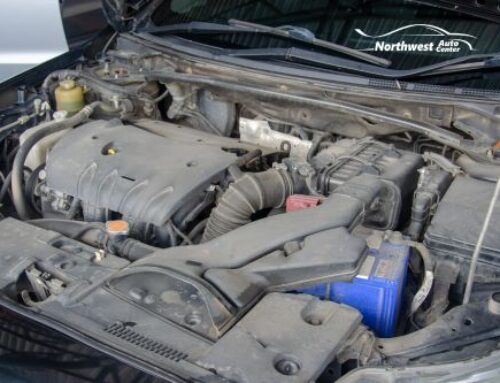
Fogging up of vehicle windows is a common annoyance that can hinder visibility and compromise driving safety. This phenomenon occurs when there is a difference in temperature between the inside and outside of the vehicle, causing moisture to condense on the glass surfaces. For drivers in Texas, where the climate varies widely and humidity levels can be high, preventing fogging can feel like a losing battle.
But it doesn’t have to be. Let’s dive into preventing foggy windows — even in Texas.
Tips to Preventing Foggy Windows
Use Air Conditioning Wisely
Texans are no strangers to heat, and air conditioning is a vital tool for staying comfortable during scorching summers. However, when it comes to preventing foggy windows, using the air conditioning effectively is key.
Set your A/C to the “Fresh Air” mode rather than “Recirculation mode,” when initially using the a/c. After a few minutes, turn the a/c to the recirculation setting. By doing this, the a/c system removes a lot of moisture (humidity) out of the air inside the cabin. Adjust the temperature to a comfortable level and make sure the A/C is properly maintained to avoid any issues that could contribute to condensation.
On older vehicles, it’s also a good idea to “dry out the evaporator core” at the end of your commute. About a minute or two before you’re home, turn the A/C off and let the air run through the evaporator to help it dry out (and avoid the moldy smell). Most newer vehicles have controls in place to where the aforementioned is done automatically.
Defrost and Defog Your Windshield
Modern vehicles come equipped with defrost and defog settings that can quickly clear up foggy windows. Texas drivers should familiarize themselves with these settings, as they effectively redistribute warm air to remove moisture from the glass surfaces. It’s particularly important to use the defrost setting during cooler months when temperature variations are more significant.
Keep Windows Clean
Dirty windows are more prone to fogging, as dust particles and grime can attract moisture and hinder visibility. Regularly clean your vehicle’s windows, both inside and out, to maintain clear surfaces.
Park Strategically
Parking your vehicle in a shaded area can help prevent extreme temperature differences between the interior and exterior, reducing the likelihood of fogging. For Texas drivers, this has the added bonus of protecting your car’s exterior and interior from the harsh sunshine.
Crack Windows Open
Allowing a small gap in your windows while parked can help facilitate air circulation and prevent excessive moisture buildup inside the vehicle. Be cautious, though, as this practice should only be employed in safe parking situations to ensure security.
Use Rain Repellent Products
Applying rain repellent products to your vehicle’s exterior windows can help water bead up and roll off, reducing the chances of moisture accumulating on the glass. This can be particularly beneficial during rainstorms or when driving through areas with high humidity.
Keeping Your Windows Clear
Driving in Texas presents its own set of challenges, and preventing fogging up of vehicle windows is an important aspect of ensuring safety and comfort on the road. By following these tips, Texas drivers can effectively manage temperature and humidity differences to minimize the risk of foggy windows. From using air conditioning wisely to employing rain repellent products, each strategy contributes to a clearer view and a safer driving experience.






Leave A Comment
You must be logged in to post a comment.